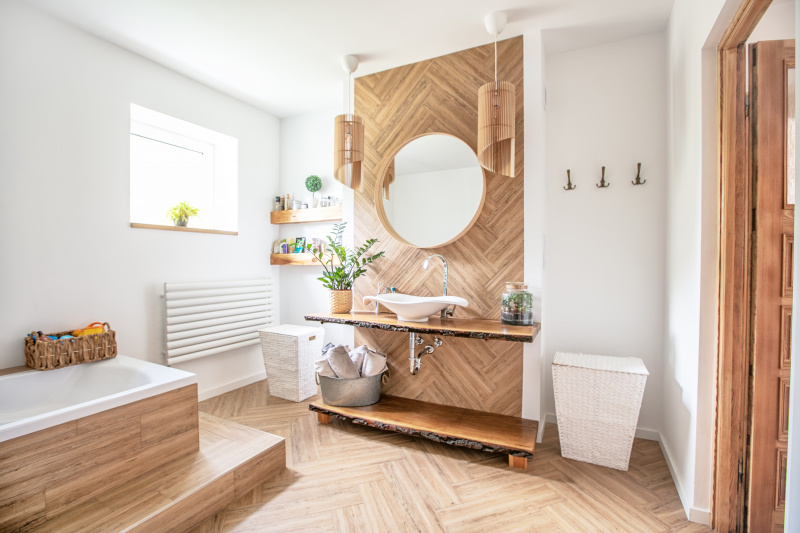

The Inside Scoop on Designing a Bathroom With Wood
 Chances are, wood doesn’t come to mind when thinking of the best materials to use in your bathroom. As it turns out, however, if you take the necessary steps, it can be an excellent choice for showers, soaking tubs and practically anything else in this space. Of course, what makes it even more appealing is that appointing your bathroom with rich wood grain finishes can really be tailored to a variety of styles, from a sleek and modern aesthetic to laid-back, rustic vibes. If this sounds like something you might be interested in, here are the basics of what you need to know when using wood in the bathroom. Chances are, wood doesn’t come to mind when thinking of the best materials to use in your bathroom. As it turns out, however, if you take the necessary steps, it can be an excellent choice for showers, soaking tubs and practically anything else in this space. Of course, what makes it even more appealing is that appointing your bathroom with rich wood grain finishes can really be tailored to a variety of styles, from a sleek and modern aesthetic to laid-back, rustic vibes. If this sounds like something you might be interested in, here are the basics of what you need to know when using wood in the bathroom. Choose the Right Type First off, you need to choose a type of wood that’s naturally resistant to rot and moisture, otherwise you’re going to end up with problems very quickly. Teak, ipe and cedar all exhibit these qualities, which is why they are often the go-to for outdoor showers, but of course, can fare just as well when used inside. Ventilation is Key If your bathroom stays moist and humid for long periods of time after you take a shower, that can cause the wood to warp or even rot. A proper exhaust fan will help to remove the steam and allow the wood to dry quickly after each use so that it doesn’t get damaged over time. Keep It Safe With a Sealant Just as you would apply a sealant to your wooden deck, it’s wise to do so in the bathroom to further protect the wood from moisture even if it won’t be coming in direct contact with water. This can be done with a natural oil, such as linseed oil, which is so effective that it’s used for wood soaking tubs. In addition to repelling the water, a natural oil will also be able to maintain the distinct feel and smell of the wood, unlike a harsher chemical-based sealant. |
Today's Top Stories |
